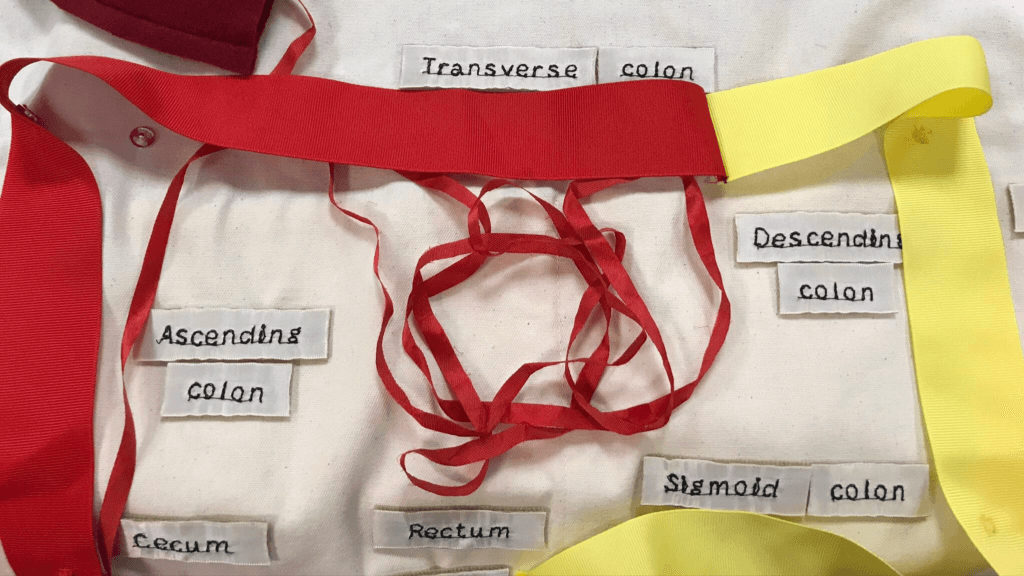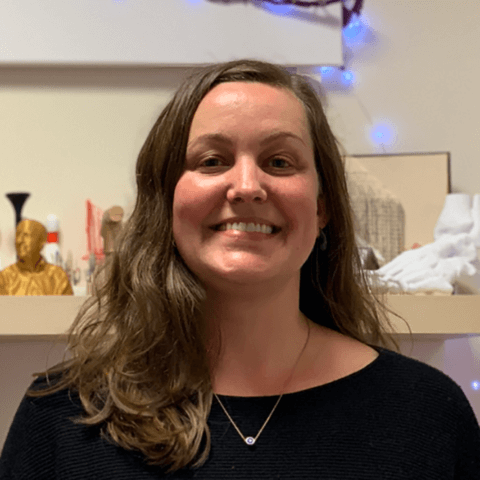This week’s maker is Barbie Klein, PhD, assistant professor in the UCSF Department of Anatomy. We caught up with Dr. Klein in between class to see what she has been working on in the Makers Lab.
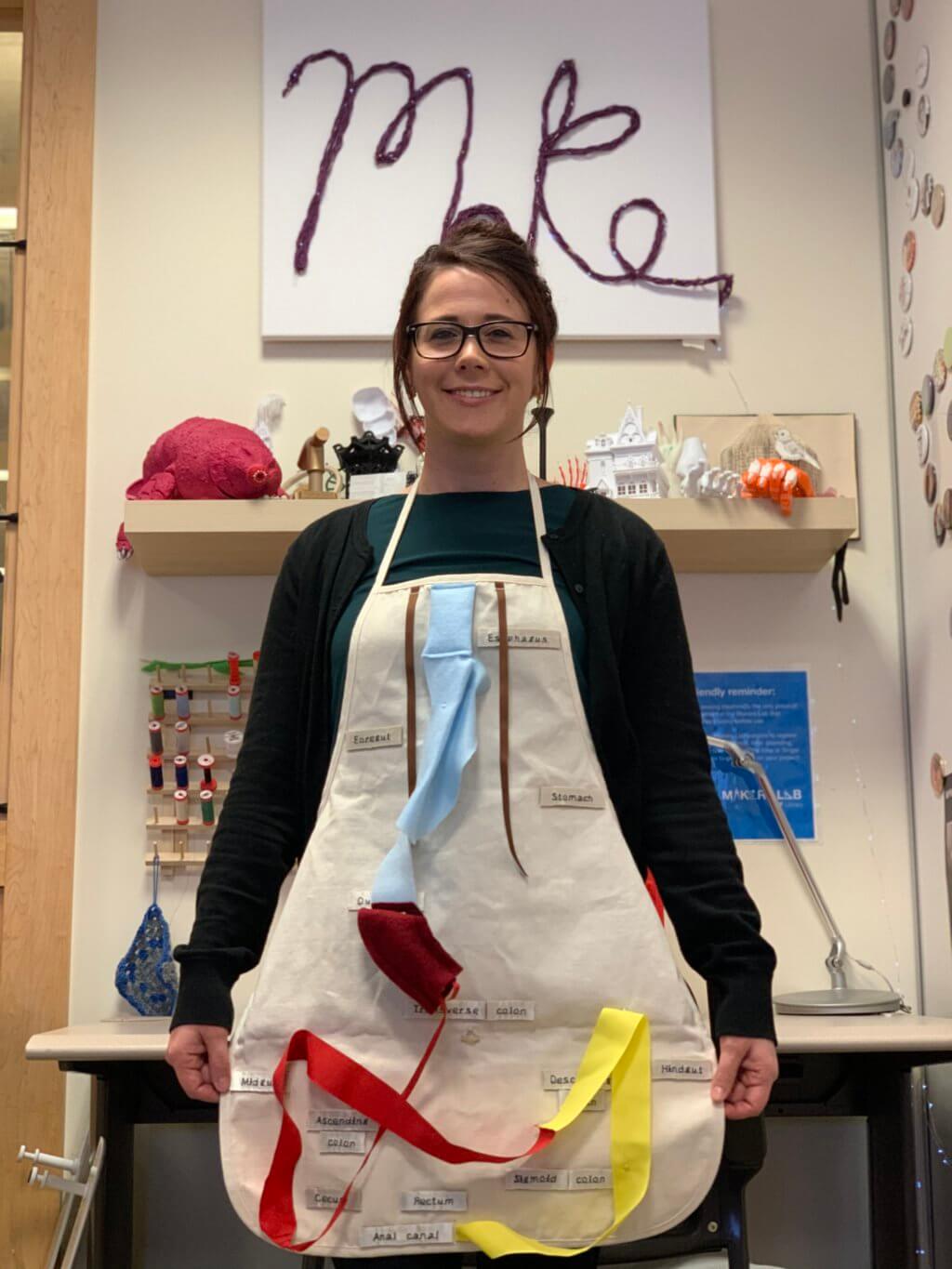
Q: What did you make?
I collaborated with Aira Lipson to create an apron demonstrating embryonic development of the gastrointestinal tube. The apron is color-coded to indicate the three divisions of the gut tube (foregut, midgut, and hindgut), demonstrates differential growth of the small intestine, and rotation.
Q: What did you want to make?
Inspired by a design from my colleague, Dr. Keely Cassidy, from a previous publication (Chan, 2010), I wanted to create a more durable model than the original that I created from a plastic apron and construction paper so that students could feel comfortable using the apron without the fear of destroying it during the rotations.
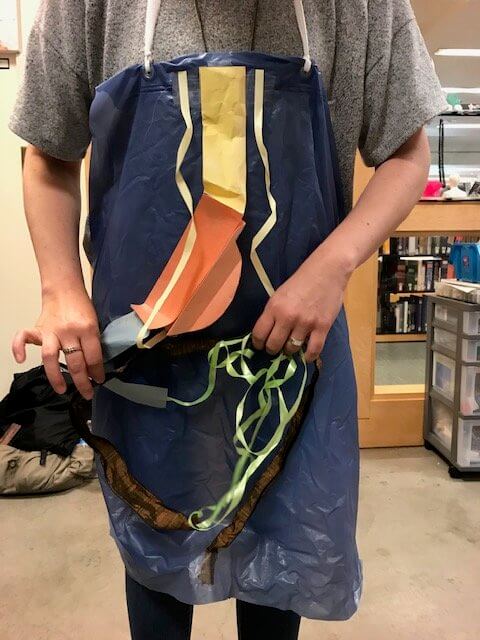
Q: What was your process?
I created paper templates of the stomach and duodenum and Aira then cut them out of colored felt. After sewing the pieces together, she attached the gut tube to the canvas apron. Ribbons of different color and size were then attached to represent the small and large intestines. Ribbon was also used to represent the vagus nerves (CN X) and shows how the left vagus nerve becomes the anterior vagal trunk while the right vagus nerve becomes the posterior vagal trunk.
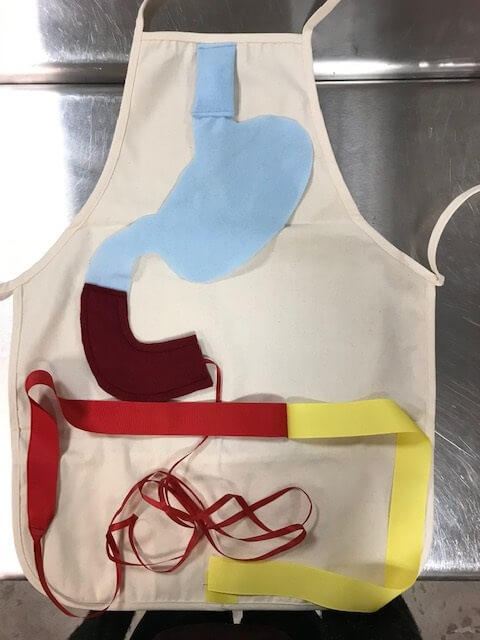
Q: What was the hardest part of the process?
We went through an iterative process of sewing the structures together. We will sew on the snaps before sewing the tube of the duodenum together in the future.
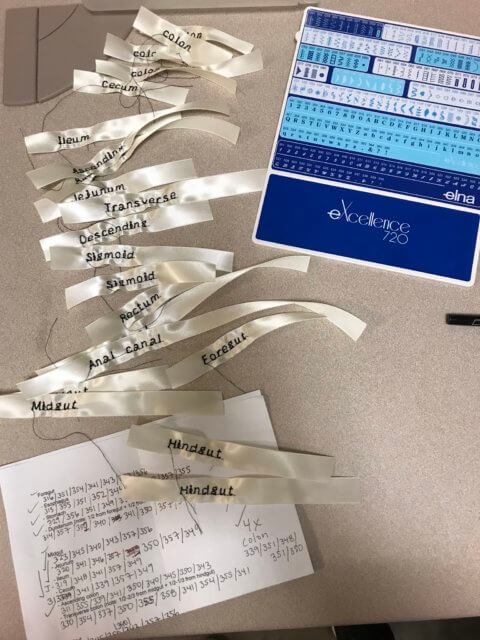
Q: What was your favorite part of the process?
Aira’s expertise and creativity took this project to another level! She used the Elna sewing machine to create written labels of various parts of the gut tube on ribbon with Velcro backing. The Velcro backing allows the label orientation to change so they can be read whether you are watching someone using the apron or if you are personally using the apron. We stuffed ribbon into the duodenum that can be pulled out to simulate growth of the intestinal loops. We’ll be adding small magnets along the ascending and descending colon to represent how these parts of the large intestine become secondarily retroperitoneal.
Q: Why did you make it instead of buying it?
This unique educational project cannot be bought and needed help from the Makers Lab.
Q: How did this make you a better professor?
Understanding the complex processes that occur during development of the gastrointestinal system can be challenging. This experiential apron allows students to physically ‘rotate their guts,’ visualizing the processes as they unfold during the first trimester of pregnancy. I hope that by learning gut tube rotation using this apron students will more readily understand gastrointestinal development than by passive learning approaches.
Q: What do you want to make next?
Aira and I have plans to continue making this apron more helpful for students by including a way to demonstrate the development of the greater omentum. Next, we are going to collaborate on a fabric and plastic model to help students learn anatomy of the pelvis and perineum.
